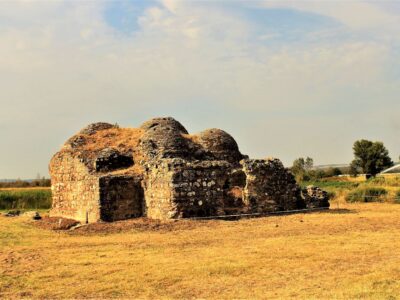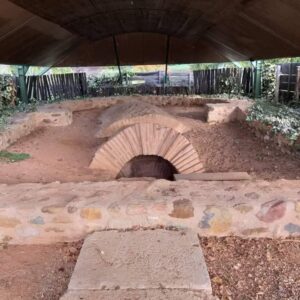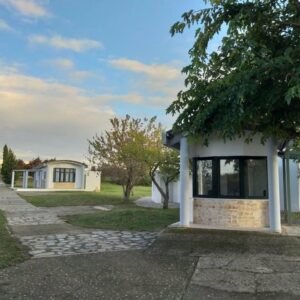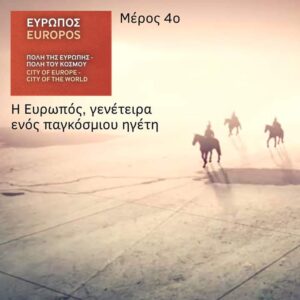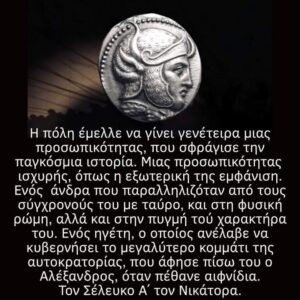ANCIENT EVROPOS – THE KOUROS – “THE CITY OF EVROPOS”
An archeological treasure awaits the visitor in ancient Evropos, which is located just one kilometer away from the contemporary same named town . The excavations that revealed the history of the city of Evropos began in 1989.
The archeological dig brought to light a big part of the deceased land of ancient Evropos and the evidence led to the discovery of the prehistoric city.
One of the top archeological finds discovered in the area is the sculpture of a Kouros, which was found on a field during plowing, in 1966. The statue, at a natural height of 1.80 meters, refers to the morphology of Kouros and is a product of an island and most likely a Cycladic laboratory, as revealed by the marble’s origin.
Kouros dates to the end of the 6th century BC. and is considered one of the latest examples of the Kouros series, because its arms and legs are almost detached from the body, while it is represented with short hair, despite the characteristic hair of the rest we know.
According to archaeologists, Kouros of Evropos was a grave sign, of a prominent citizen, local or even resident from Southern Greece, settled in the ancient city. Its discovery in the region reveals the trade and social-economic relations of Evropos with the other Greek cities.This theory is supported by the shells (pieces of pottery) of Corinthian or Attic black-figure and red-shaped inserted ceramics revealed by the excavation research.









